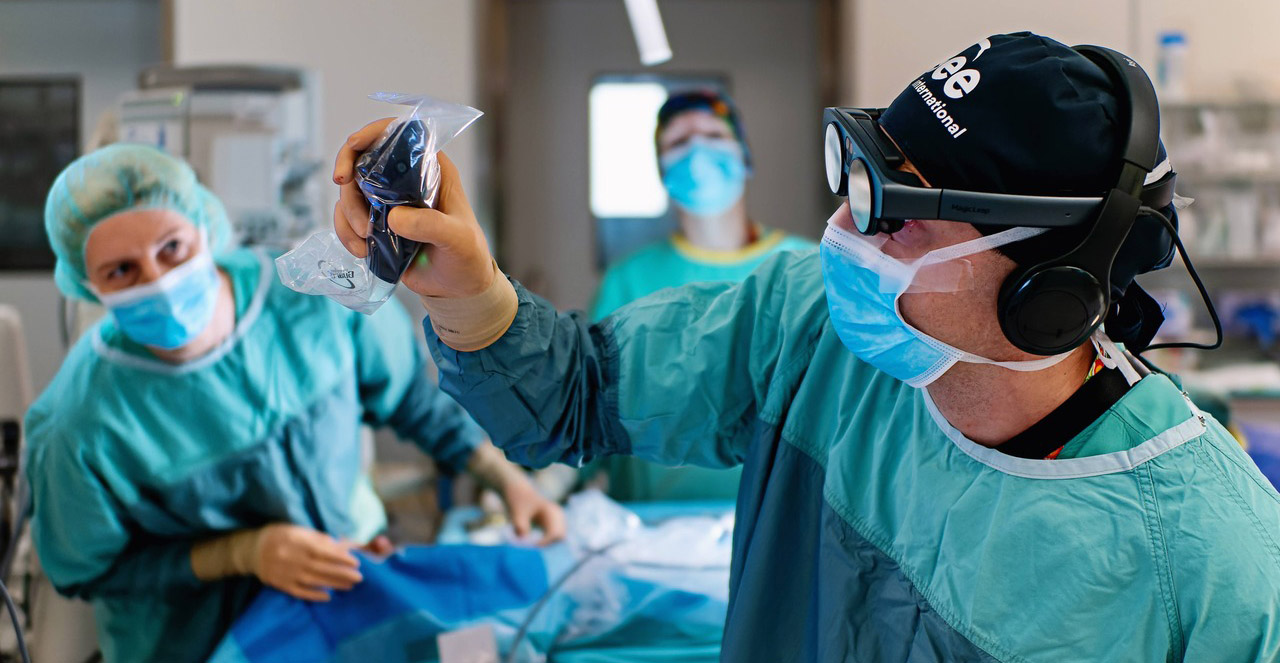
The Problem: Anatomy in Two Dimensions, Surgery in Three
One of the enduring challenges in medical education is translating two-dimensional learning materials - such as textbooks and scans - into three-dimensional practical skills. Surgeons must understand complex anatomical relationships and pathology within the spatial constraints of the human body. Traditional resources like cadaver dissections, plastic models, and 2D imaging have limitations, especially when it comes to presenting anatomical variations or dynamic pathologies.
Summary
- The study evaluated the use of Medicalholodeck for teaching thoracic surgery using real-time 3D CT imaging in a collaborative VR environment. Conducted at the University Hospital Bonn with 70 medical students, it found that 98% improved their spatial understanding, 89% found VR effective, and 77% rated the system intuitive despite little prior VR experience.
- Strong student support emerged, with 94% advocating for VR in clinical teaching and 78% interested in remote learning. The results highlight VR’s potential to modernize medical training by enhancing understanding and bridging theoretical and practical skills.
Virtual Reality: From Concept to Clinical Classroom
The research team from the University Hospital Bonn sought to address these limitations by testing a virtual reality-based teaching system specifically for thoracic surgery education. At the heart of this initiative was Medicalholodeck, a specialized platform for collaborative medical visualization in VR. The system enabled real-time, three-dimensional rendering of computed tomography (CT) data, allowing students to interact with detailed anatomical models in an immersive, multi-user environment.
The researchers designed the system with three key objectives:
-
Clear Visualization: Using Medicalholodeck, surgical pathologies were presented in a highly intuitive and interactive manner, leveraging real patient CT imaging for case-based learning.
-
Collaborative Learning: The platform’s virtual spaces facilitated teamwork and discussion among students and instructors, replicating the dynamics of a clinical setting regardless of participants' physical locations.
-
Mobility: The system was designed for campus-wide use, ensuring flexibility and accessibility while maintaining the technological rigor required for medical training.
By integrating Medicalholodeck into the thoracic surgery curriculum, the researchers aimed to evaluate not only the platform’s technical feasibility but also its impact on learning outcomes and student engagement. This initiative highlights how advanced VR solutions like Medicalholodeck can bridge the gap between traditional and modern educational methodologies, setting a new standard for medical training.
The Findings: VR Enhances Learning Outcomes and Engagement
Over 70 fourth-year medical students participated in the pilot study, which revealed several significant findings about the impact of VR on surgical education:
-
Enhanced Spatial Understanding: A remarkable 98% of students reported that VR improved their ability to comprehend spatial and anatomical relationships compared to traditional methods.
-
Effective Teaching Tool: Nearly 89% of students found VR to be an effective method for learning surgical techniques and understanding pathologies.
-
User-Friendly Design: The system was rated as intuitive by 77% of participants, despite most having no prior VR experience.
-
Engagement and Enjoyment: Students overwhelmingly enjoyed the sessions, with 97% highlighting the interactive nature as a key factor.
-
Low Incidence of Discomfort: Only 5.7% of students experienced cyber sickness, a common concern with VR systems, suggesting the setup provided a comfortable user experience.
These results underscore the potential of VR to improve not only learning outcomes but also students’ overall engagement and enthusiasm for surgical education.
Beyond the Classroom: Future Applications of VR in Medicine
The study also highlighted strong student support for expanding VR’s role in medical education:
-
Over 80% of participants advocated for integrating VR into preclinical courses, and 94% supported its use in clinical training.
-
Many students (78%) saw potential for VR-based remote learning, emphasizing the flexibility and accessibility it offers.
-
A majority believed that VR could partially replace traditional teaching methods, though they valued a hybrid approach combining VR with hands-on learning.
The researchers noted that while VR is not a complete substitute for conventional methods, it can complement and enhance traditional curricula, making surgical training more dynamic and comprehensive.
Why VR Matters: Redefining Surgical Training
The integration of VR into surgical education represents more than just an upgrade in teaching tools; it reflects a fundamental shift in how medical students engage with complex material. By enabling them to visualize and interact with 3D anatomical structures, VR bridges the gap between theoretical knowledge and practical skills.
This pilot study provides a blueprint for how medical schools can harness VR to prepare future surgeons. Beyond thoracic surgery, VR could be applied across numerous specialties, offering scalable solutions for medical training in resource-limited settings. As technology evolves, the possibilities for its use in medical education are vast.
For more information, contact info@medicalholodeck.com November 2024